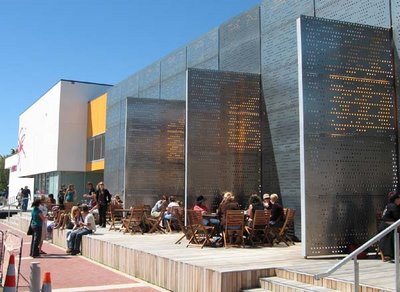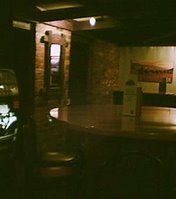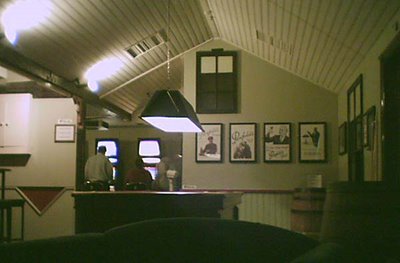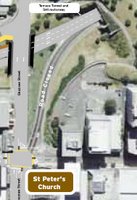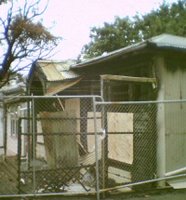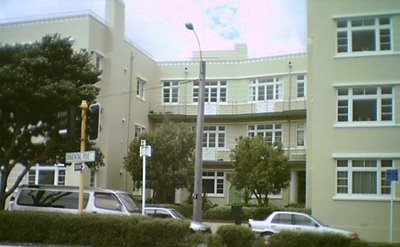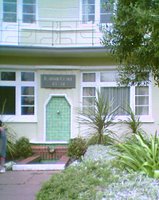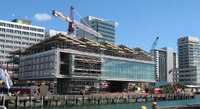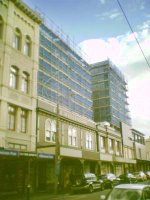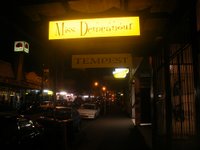My
anti-sprawl stance has come in for
a bit of flak from Peter Cresswell, who says that my arguments demonstrate a "sneering mixture of envy and myth". I'll try to ignore the irony of being called "sneering" by someone who refers to "Al Bore" and calls Colin James a "dickhead", and respond to the specific points that he raises.
First, though, there's a limit to how far I can push the debate with someone who, as an extreme libertarian, makes individual freedom of choice the object of an almost religious reverence. I certainly believe that human liberty is a worthy principle, but I also believe that the decisions made by individuals are fallible, emotional, instinctive, subject to imperfect information and inflected by stories that a society tells to itself (such as "the American Dream" or "
the Kiwi Way"). "Choice" is not a supreme spiritual power but the product of competing desires and calculations, and it is influenced by shared values, peer pressure and persuasion: otherwise, advertising agencies would not exist.
Humans are also not good at making decisions based upon long-term considerations (there may be an evolutionary reason for this - a hangover from uncertain times when immediate benefits were all that could be relied on). Some would argue that if people's choices lead to personal or collective disaster, then so be it; choice is the supreme virtue. But I'd have to put human wellbeing ahead of an abstract principle, and if collective responsibility (including planning and regulation, if necessary) provides better long-term results for society, then I'm for it.
With those ideological or philosophical differences, there will come a point when rational argument has run its course and we are left with irreconcilable axioms. But here goes.
First, his answer to my insistence that developers pay for the infrastructural costs of sprawl is to call for mass privatisation: "Let infrastructure be provided privately, however, with costs sheeted home to users, and this objection dissolves." But if you carry this through, what does it mean for the "affordability" of houses in new subdivisions? If every home owner has to pay the individual cost of getting his or her house hooked up to water, sewage and electricity, part of the price advantage of greenfield development would disappear. That, of course, is what the developers' contribution is supposed to partially represent, but without the radical privatisation agenda (
what Richard Chappell terms "the Libertarian Utopia") that I'd suggest most New Zealanders would not wish to see. And of course, this developers' contribution is one thing that Pavletich and his buddies want to avoid.
When I question the long-term affordability of sprawl, he replies: "isn't the future affordability or unaffordability up to those who choose to live in these sprawling, car-dependent suburbs, and to invest in their own future?" This is the "relax, the market will sort it out" point of view, and it's based upon those assumptions of complete rationality and perfect information that I mentioned earlier. Never mind the consequences when those investment decisions go pear-shaped: the purity of the market is paramount. It's also based on the idea that those decisions have no consequence for anyone else, and thus should be no-one else's business. If everyone in the suburbs worked from home, then there might be something in that, but they don't. More homes further away means more cars coming into the city, which means more space taken up by motorways, "bypasses" and carparks, thus impacting on the quality of life of those who've chosen to live close to the city.
He then quotes
the Washington Post on five "myths" about sprawl. For a start, as some of the
commenters point out, the article contains some very dubious statistics. Also, the authors are both from the ironically-named "Reason Foundation", which likes to pitch itself as the defender of the little guy against big government, but has a very interesting collection of
sponsors (including such put-upon little guys as ExxonMobil, Ford, General Motors and Shell). But let's deal with these "myths" one at a time.
"Myth" #1: Americans are addicted to driving. The article attempts to counter this by saying that cars are just a useful tool for Americans, but having a car in American suburbia is not just "useful" but so indispensable that it would have to count as a dependency. After some dodgy stats aiming to show that Europeans use cars almost as much as Americans (which will be news to anyone who has lived in London), they then go on to claim that "the key factor that affects driving habits isn't population density, public transit availability, gasoline taxes or even different attitudes. It's wealth." In other words, the all-conquering American economy has made Americans wealthy, so why wouldn't they drive?
But that doesn't stand up to scrutiny. Wouldn't that mean that in a given city, public transport usage would drop off with personal income? As
I showed earlier, that's certainly not the case in Wellington, where well-off people are just as likely to take the bus, and even more likely to use trains, as people on lower incomes. The parts of Wellington from where people drive to work are not the rich suburbs, but low-density ones (like Paparangi, Grenada and Churton Park) far from the public transport corridors.
"Myth" #2: Public transit can reduce traffic congestion. According to the article, even "tripl[ing] the size of [America's] transit system and fill[ing] it with riders ... would not 'notably reduce' rush-hour congestion, primarily because transit would continue to account for only a small percentage of commuting trips". But of course, if you start from the tiny base of most American cities, there's a long way to go. In Wellington, where public transport already makes up a significant proportion of CBD commuter trips (largely because it doesn't sprawl that much), it
is possible to reduce congestion. From 2005 to 2006, the number of cars entering the CBD at rush hour
decreased by 9%. That may not sound like much, but remember that one of the arguments for the bypass was that it should reduce waterfront traffic by only about half that, and that a few percentage points can make the difference between free-flowing traffic and jams. Over the same period when those 3000 or so cars per morning were removed from the city, public transport morning ridership increased by over 5000 people, so I think it's fair to say that the reduction was due to a shift to transit. Now, of course, with rising fares, easing petrol prices and a transit system that was pushed beyond its capacity, it seems we've
missed this particular opportunity to make that a permanent shift, but it shows that public transport
can make a difference.
"Myth" #3: We can cut air pollution only if we stop driving. Apparently, cleaner cars will save the day. We certainly should be aiming for better emissions standards, and it seems a little ironic that the pro-market Reason Foundation should trumpet the benefits of government clean air regulations that I don't think their sponsors would have been too keen on. Reducing driving may not be the "only" way to reduce air pollution (notice the straw man?), but it certainly helps.
"Myth" #4: We're paving over America. In a NZ context, Cresswell puts it thus: "If all of NZ's 1,471,476 existing households were to be rebuilt on an acre of land ... we'd all fit in an area less than one-quarter the size of the Waikato". As I mentioned earlier, that might be okay if we never left our little quasi-rural fastnesses. The issue is not how much land is available in New Zealand, but how much is available close to where people work. Housing all of Auckland's current population at that density would take twice its current area, without even allowing for workspaces, industry or shared public space (a concept that I presume is anathema to proper libertarians). They claim that building on environmentally valuable land is not on their agenda, so with Auckland forced to squeeze out between those and the sea, those at the far edges would have to put up with very, very long commutes.
"Myth" #5: We can't deal with global warming unless we stop driving. Another straw man there: reducing transport-related emissions is one important part of the response, but no-one says it should be the only one. It's interesting to see Cresswell state that "livestock are a greater 'threat' to the planet than our cars", given
the apoplectic response of his Libertarianz friends to the so-called "fart tax". He then goes on to take what I call "
the Peter Brown line": "even if you take seriously the alarmism of the warmists, that's not going to stop everyone driving, particularly not the drivers in China and India who are just going to go right on getting rich and driving more". I take that to mean that because NZ as a whole is only a small producer of greenhouse gases, it's up to bigger countries to do something about it.
That makes as much sense as saying that because, say, everyone with a first name of "Peter" only produces a small percentage of gases between them, they can't make a difference. Every gram of carbon dioxide matters, no matter where or by whom it's produced. And because we start from a much higher base, each of us can make
more of a difference that someone in the developing world. For instance, driving 25km each way every day in a large car can generate well over a tonne of CO
2 in a year. That's more than
a person in many developing countries generates through
all his or her activities, not just transport.
He ends with the classic libertarian argument: "the only thing to do is ensure that price signals here reflect the true realities, and leave people free to choose." That, of course, presupposes that people
have a choice, and in the far-flung outposts of suburbia there is currently little option besides driving. When petrol prices went up last year, those people were no doubt envious of others living within walking distance of good public transport. That's why I argue that cities require an element of planning ahead, regardless of the short-term decisions made by individuals: urban form and infrastructure can't just change overnight in response to "price signals", but take years to implement. It's not like switching brands of toothpaste.
And finally, we come to the argument that started it all: "What the anti-sprawlists are doing with their restrictions on development is making housing unaffordable for every first-home buyer, and pushing up rent and mortage payments for everyone else." Part of my problem with this argument is that it equates "living" with "housing": what's the point of a cheaper house if the cost of getting there outweighs the saving?
This study (2.3MB PDF) shows that a more a metropolitan area sprawls, the more its residents have to pay for transport. In some of these areas (including Houston, Atlanta and Kansas City) households spend more on transport than on shelter. Within metropolitan areas (the word "cities" doesn't seem appropriate), residents of outer suburbs pay almost twice as much as those living closer in, and places with fewer public transport choices have the highest transportation expenditures. Some lenders in the US are now taking advantage of this by offering "
Location Efficient Mortgages", allowing people to buy more expensive homes in locations where they won't need to rely solely on cars, because they'll have more available income.
The argument also relies on the idea that greenfield land is cheap to buy and develop. But one of the reasons that rural land is cheap is that zoning restricts what you can do with it! The moment that the zoning comes off, the value will shoot up and its "affordability" will diminish.
Rod Oram also
pointed out in the Sunday Star Times something that
I alluded to earlier: the more expensive cities are also the most successful and desirable ones. That could mean that when a city is a good place to live, it attracts new residents and thus drives up prices. Or, those cities that offer "affordable" housing through sprawl become so unattractive that they slide down the quality of life scale, not just for those buying cheaply but for everyone. Do we really want to make our cities horrible places to live in a vain attempt to make housing cheaper?
Of course, choice is always going to play a vital role in where people live, but as I've said, the factors behind any individual's choice are varied and complex. That's part of the reason that
WellUrban is what it is: by celebrating the richness of urban life, I hope to go some small way towards countering any anti-urban prejudices that linger on from the days when cities were rife with crime, cholera and pollution. By pointing out
good examples of high-density housing, I try to counter the perception that the only alternative to suburbia is ugly concrete boxes. I don't (usually) rant on about the evils of suburbia, or tell people that they should live more closely just because it's
good for their health or the environment: I want to show that compact cities are great places to live.
Attitudes are changing, as are household sizes, ethnic composition and transport costs, and in time living in a medium- to high-density mixed-use nieghbourhood will become a lifestyle choice for more and more people. But in the meantime, a combination of tradition, "quarter-acre paradise" mythology, advertising, politics, misinformation and a lack of imagination on the part of developers will continue to restrict what the "market" wants and is provided with. To prevent that short-term market causing long-term damage to the environment and our cities, some planning and regulation is required.
 I was right when I said that the Mai Tai is even more unfashionable than the mojito: how else to explain the barman at Chow who said he hadn't made one in seven years, or the bartender at the Southern Cross who grumped that "in twelve years behind a bar, I've never heard anyone order a Mai Tai"? Of course, the other explanation is that too many of our bar staff are shamefully unfamiliar with one of the world's classic cocktails, one that dates back to 1944.
I was right when I said that the Mai Tai is even more unfashionable than the mojito: how else to explain the barman at Chow who said he hadn't made one in seven years, or the bartender at the Southern Cross who grumped that "in twelve years behind a bar, I've never heard anyone order a Mai Tai"? Of course, the other explanation is that too many of our bar staff are shamefully unfamiliar with one of the world's classic cocktails, one that dates back to 1944.
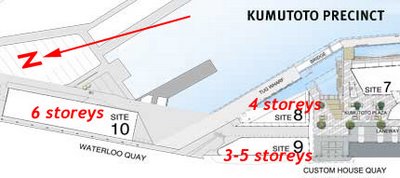
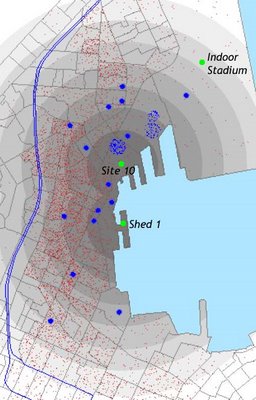
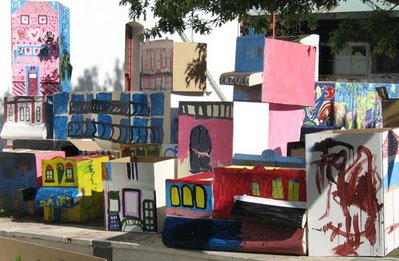



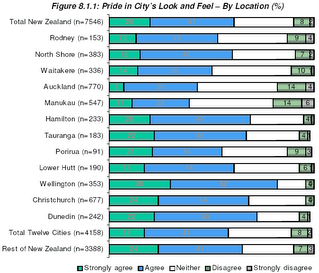


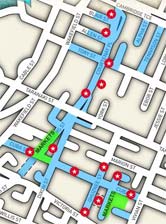


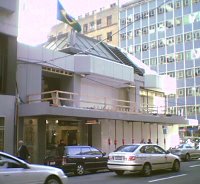
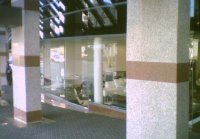
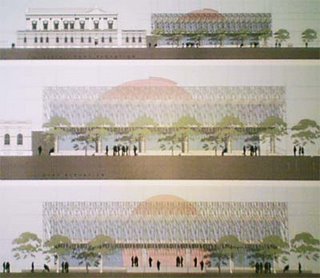
 When
When 
